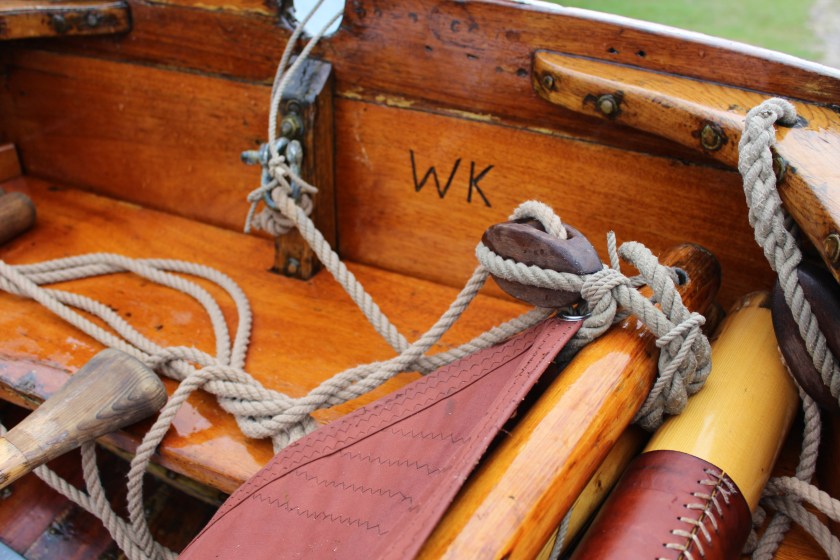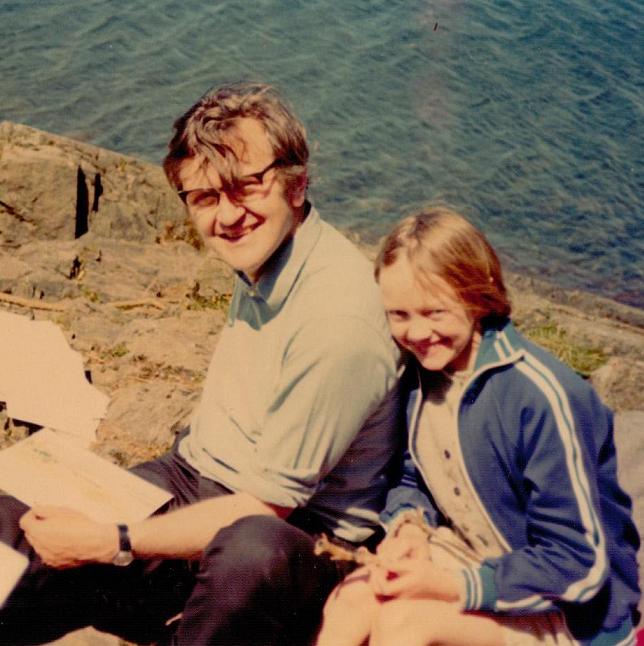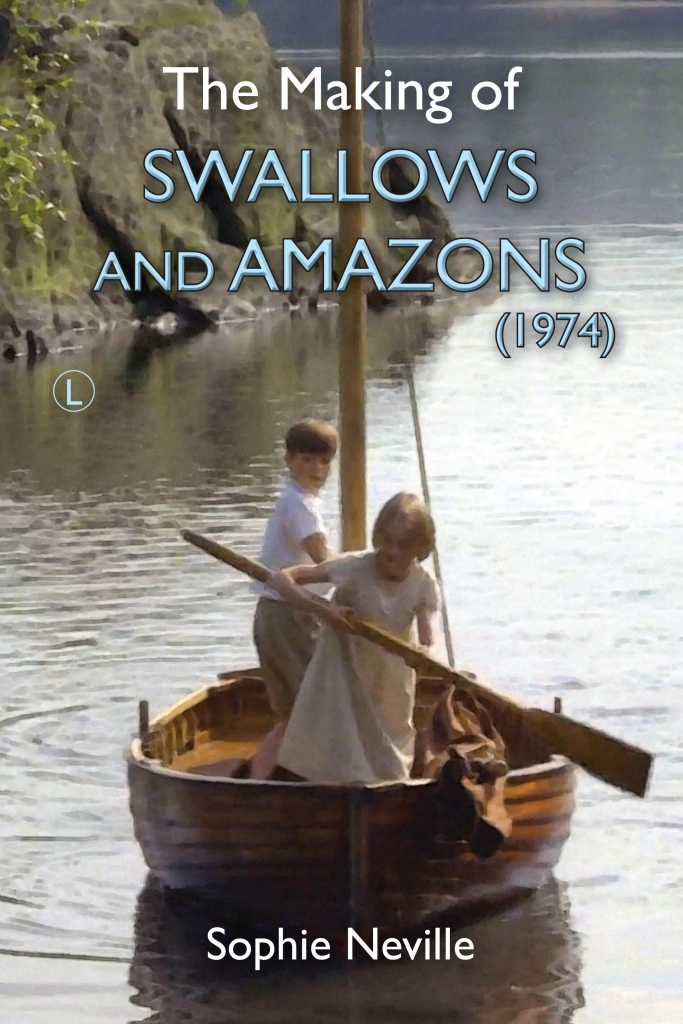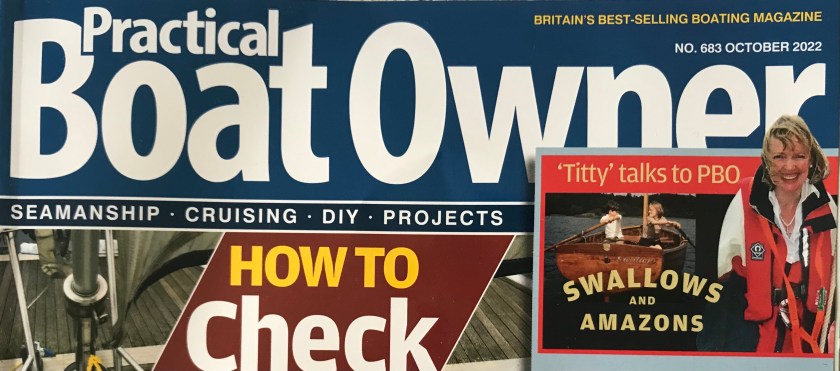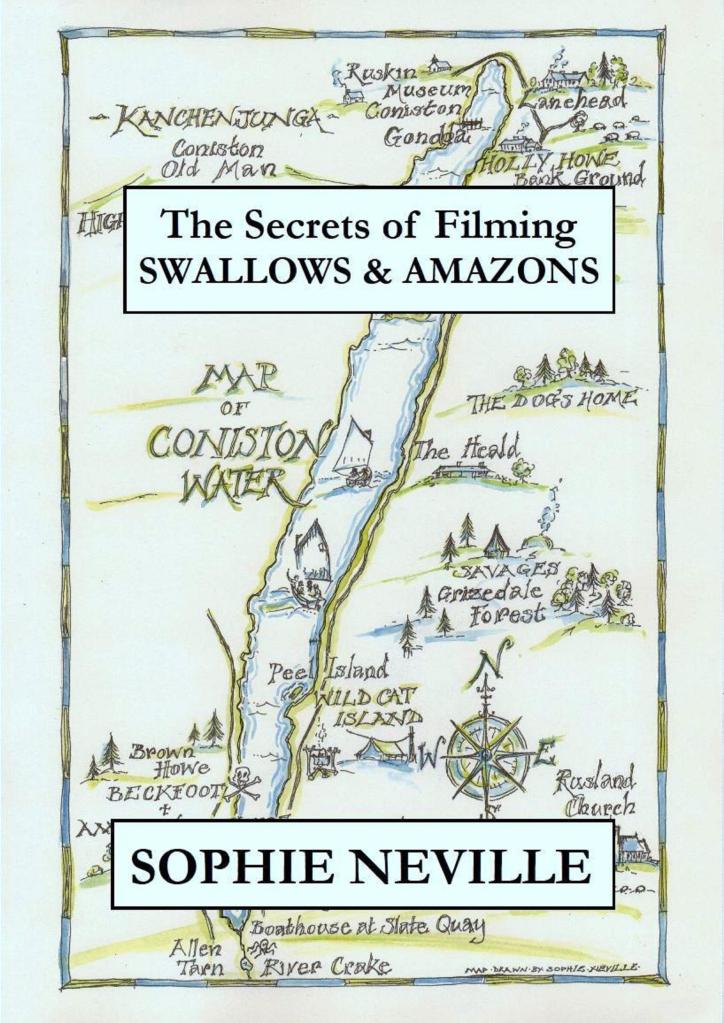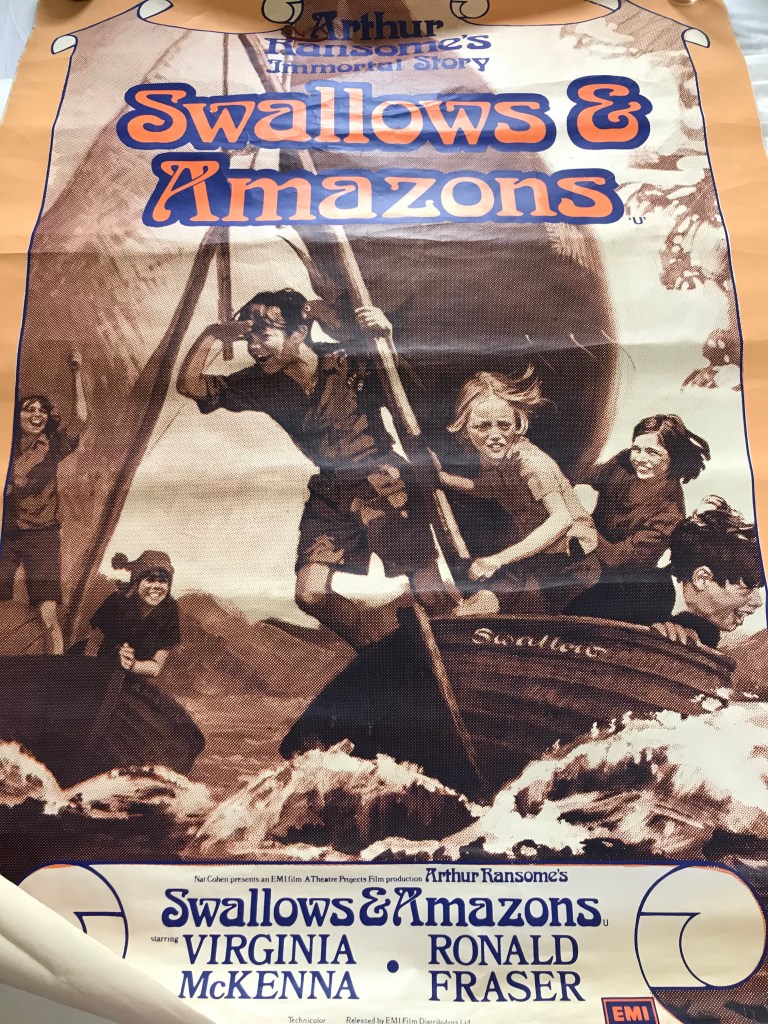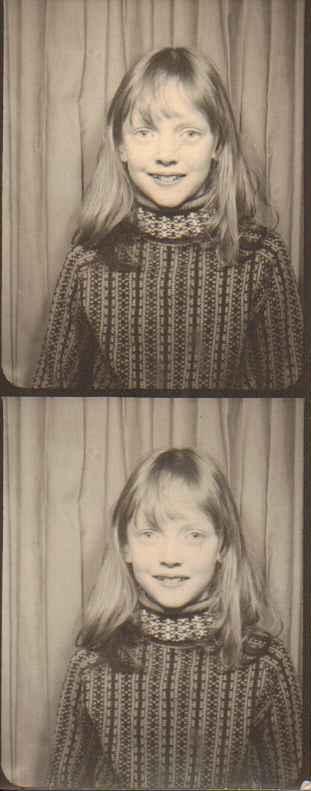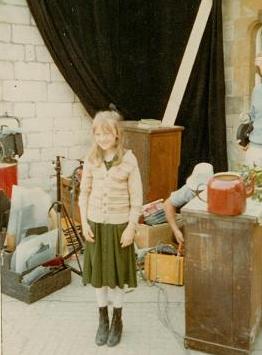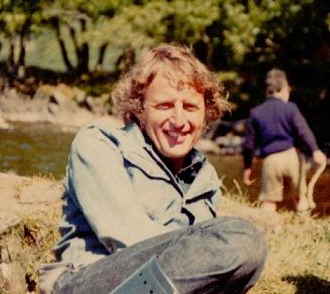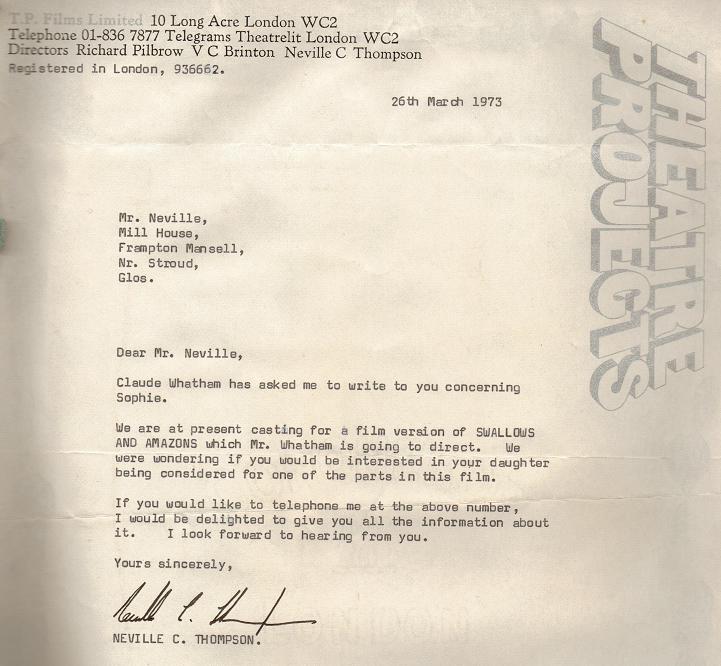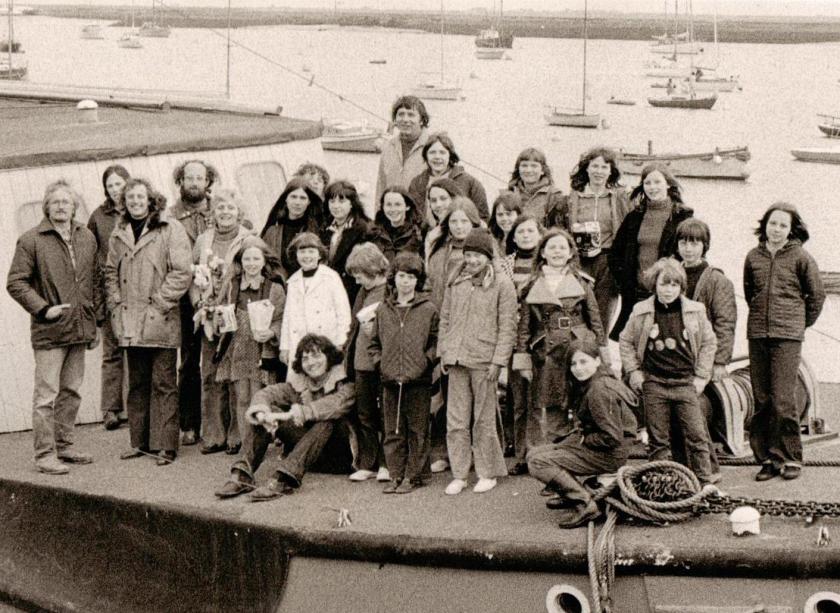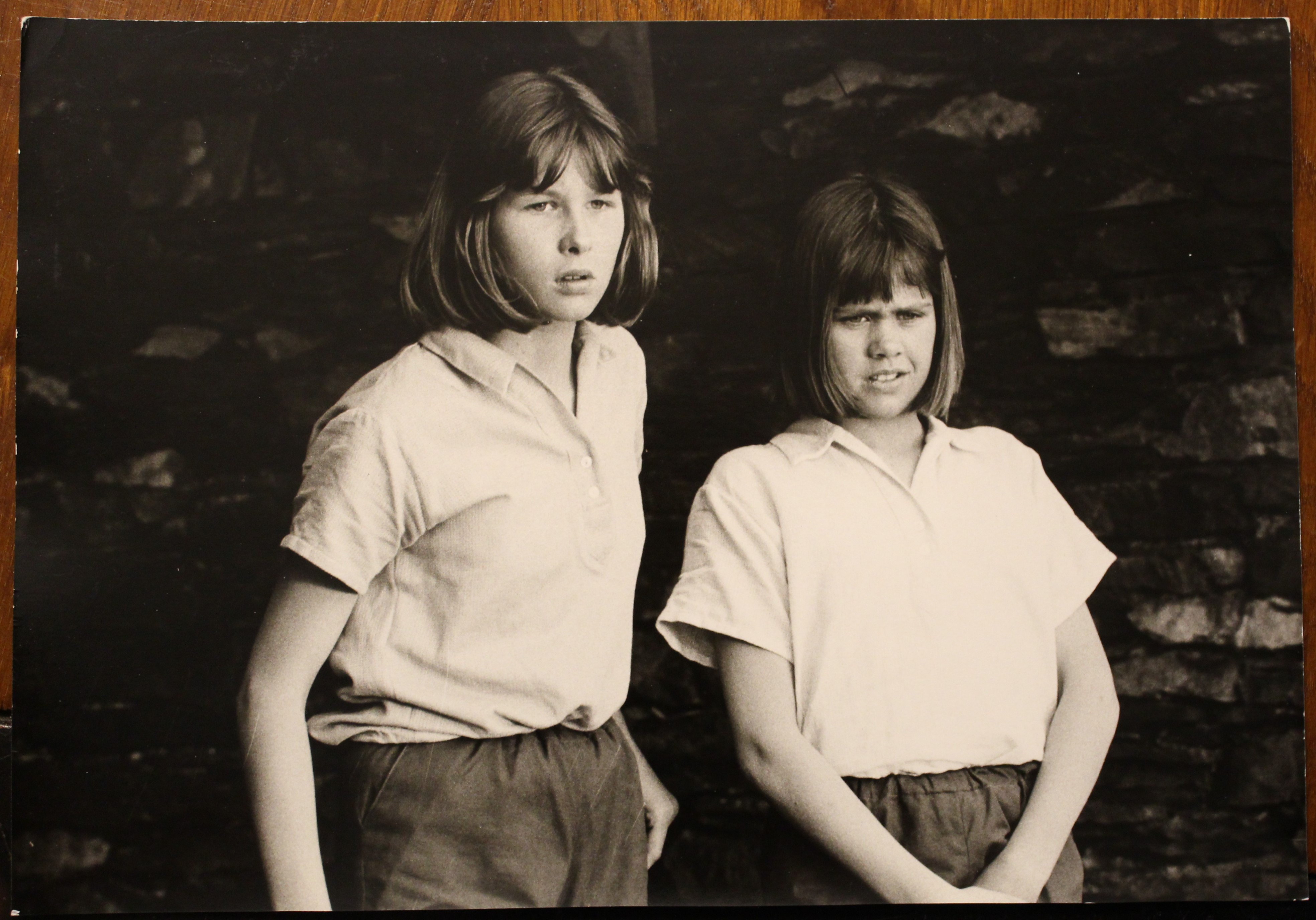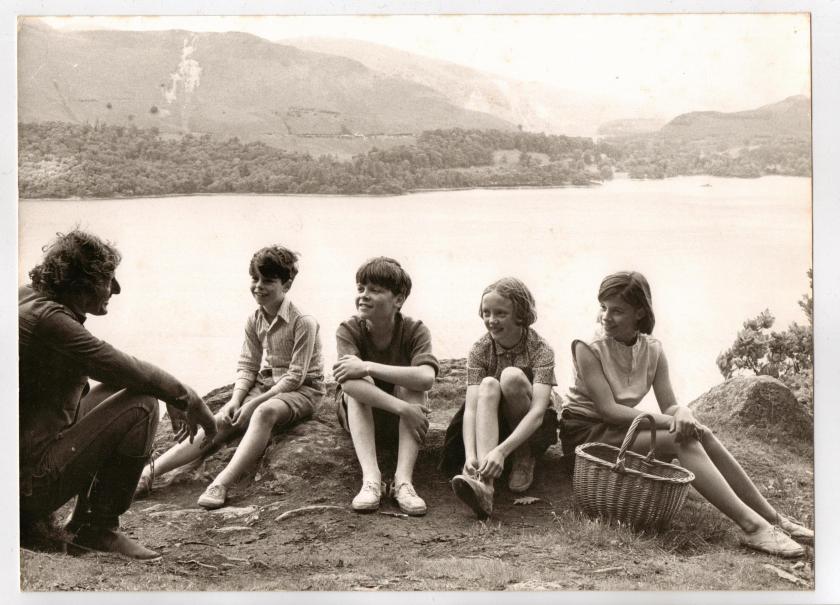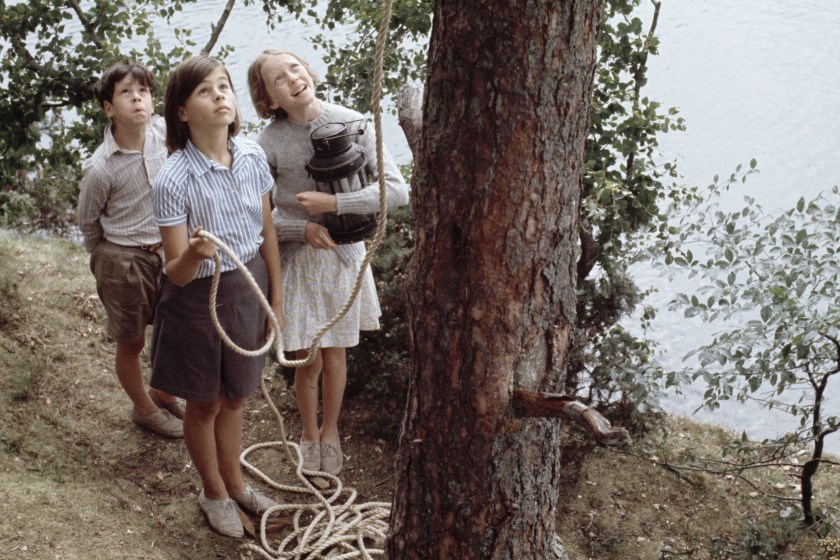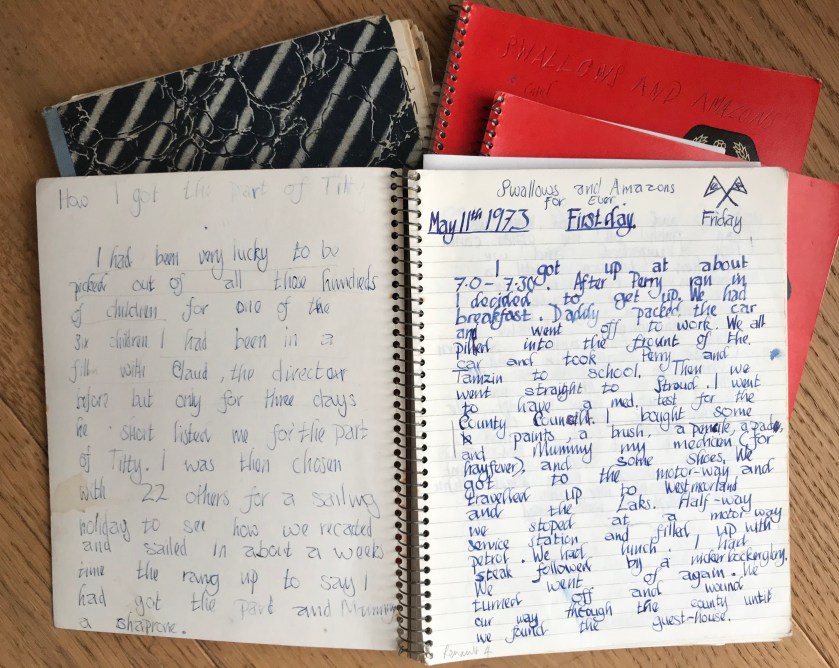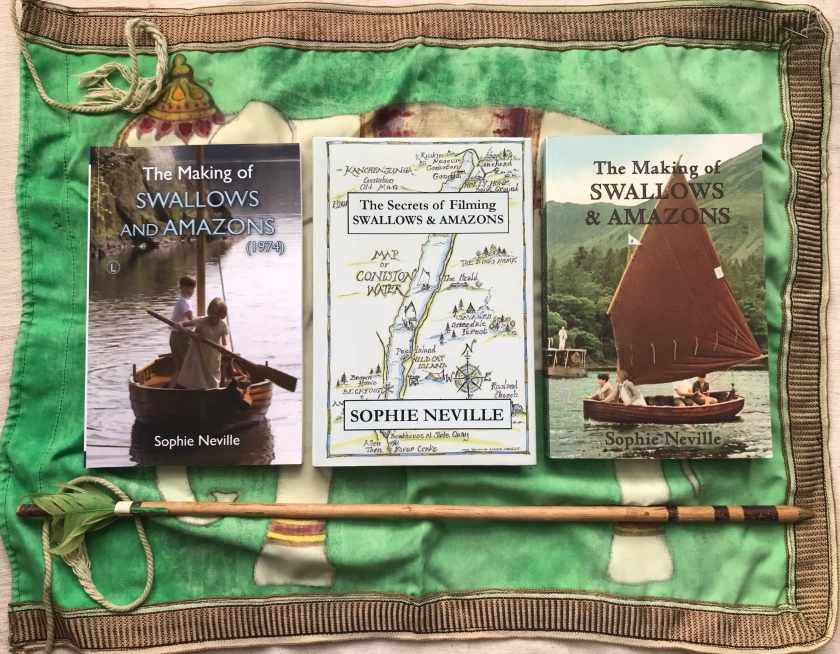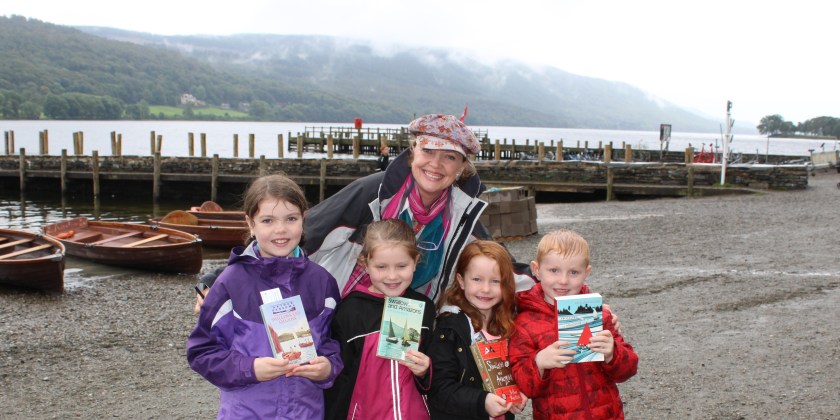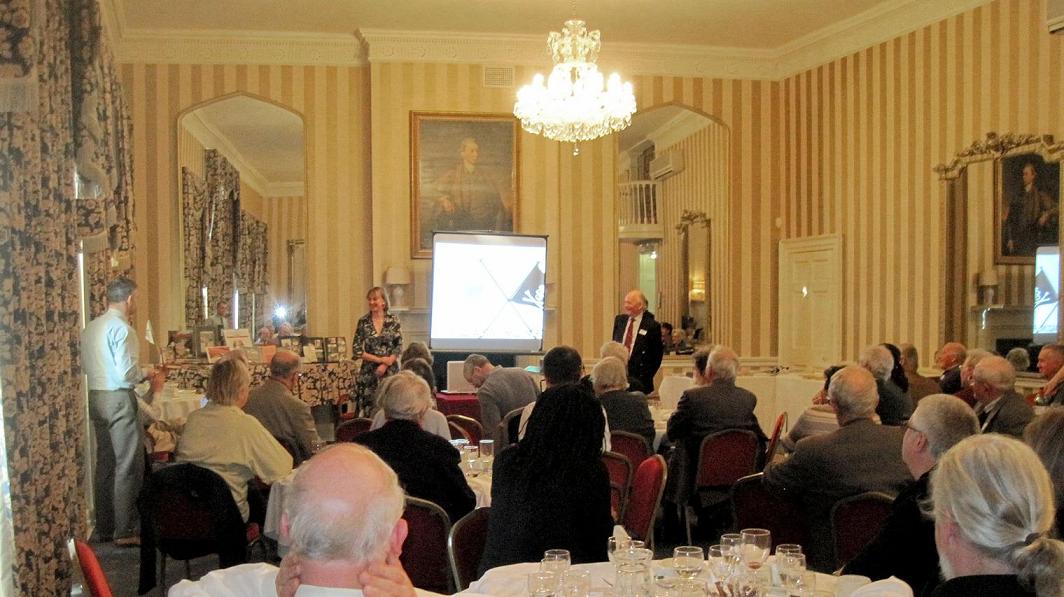BBC Antiques Roadshow featured Swallow, the dinghy used in the original feature film of Swallows and Amazons in their first episode at Windermere Jetty repeated recently on BBC One. You can read about how she was valued by Rupert Maas on an earlier post on this blog here.
I wrote a little more about her history in an article for Practical Boat Owner, Britain’s most popular sailing magazine. The story opens in 2010, when I nearly bought her myself:
‘Swallow is coming up for auction,’ my father said, sending me the details of a clinker-built sailing dinghy stored in Mike Turk’s warehouse in Twickenham. It was the Spring of 2010. I took one look at the online photographs and wept.
The letters WK were carved on her transom. It was the twelve-foot, all-purpose, run-around vessel originally owned by William King of Burnham-on-Sea that had been purchased by Richard Pilbrow in 1973 to feature as Swallow in the original feature film of Arthur Ransome’s classic novel Swallows and Amazons.
I knew the little ship intimately. She looked a bit dried out but my husband thought we ought to buy her. I had played the part of Able-seaman Titty, the nine year-old girl who Ransome so cleverly made into the heroine of the story when she grabbed a chance to capture the Amazon, which enabled the Swallows to win the war set to determine ‘who should be the flag-ship’. In mooring her prize overnight near Cormorant Island, Titty witnessed Captain Flint’s stolen treasure chest being buried and was eventually able to rescue it. She was rewarded by the gift of a green parrot.
‘Did you know how to sail before playing Titty in Swallows and Amazons?’ people often asked. The truth was that I had crewed for my father in a similar dinghy and felt confident in a boat but could not have coped single-handed.
However, I had grown up living by a lake in the Cotswolds where we had a Thames skiff, which I often took out. This was important as Titty does quite a bit of rowing in the film. She and Roger become galley-slaves rowing back from the charcoal burners’, they row out to Cormorant Island and she takes the Amazon out of Secret Harbour. This I accomplished alone, in one take, later rowing some distance from Peel Island with the lighting cameraman and his 35mm Panavision Camera onboard. No one had thought about the implications of this when we first tried out the two boats on Windermere but, being aged twelve, rather than nine, I just about coped and grew adept at launching Swallow and moving about in her. As the book was written in 1929, we did not wear life-jackets.
Arthur Ransome described Swallow as being thirteen-foot long with a keel, rather than a centre board. In the illustrations she is painted white, a common way of protecting wood in the 1930s. I am pretty sure that Richard Pilbrow, the producer of the movie, bought the rowing boat we used when we where in Burnham-on-Crouch to audition for the parts in March 1973. She was varnished but had been given and forward thwart, mast, red-brown sail and balanced lug-sail as described in the books.
Simon West who played Captain John, aged only eleven, was a capable sailor with an understanding of the wind that enabled him to cope with gusty Lakeland conditions. Swallow had no buoyancy. In the scenes when we first sail to the island she was laden with camping gear, including heavy canvas tents, the lighthouse tree lantern and a shallow basket of kitchen utensils I shifted every time we went about.
My father was an experienced sailor, used to racing yachts having frequently crossed the Solent in his own clinker-built dinghy as a boy. He was looking after us children when he agreed to appear in costume as a ‘native’ aboard the MV Tern on Windermere, which bares down on the Swallows in the story. He watched, terrified, as we sailed towards it. The Victorian steamer only had a notch throttle and an inexperienced skipper. Dad realised that Claude Whatham, the film director, had not anticipated the fact that we would lose our wind in the lee of the passenger ferry. He gave Simon a cue over the radio that was far too late. We only just went about in time, being pushed away from the larger vessel by the bow wave. Watch the film trailer and you can see how very close we got. I was about to reach out and feebly fend off.
Dad spoke sternly to the producer that afternoon, pointing out that we could have all gone down. Sten Grendon, who played the Boy Roger, was only aged eight and could hardly swim. I could have become entangled in the camping gear. My father tested the old BOAC life jackets we wore for rehearsals and to travel out to film locations. They failed to inflate. He nearly took me off the production.
Another tricky scene to film was when John, Susan and Roger set off from the Landing Place on Wild Cat Island leaving Titty to guard the camp and light the lanterns as they hoped to capture the Amazon and sail home after dark. I had push them off, grabbing the telescope at the last minute. Since Swallow’s mast was liable to catch in tree branches, I needed to wade out and give her a hard, one-handed shove. I slipped on a rock and fell up to my waste in water. Knowing it would be difficult to set up the shot a second time, I struggled to my feet and waved them off, dripping wet. By this time John had the mainsheet out as far as the knot and stood to grab the boom to avoid a Chinese gybe as Swallow was hit by a fresh gust of wind as he cleared the headland at the northern end of the island and sped northwards toward Coniston Old Man.

Having spent nearly seven weeks filming in the Lake District, the film was post-synced at Elstree studios. We arrived to sing out our lines to find Swallow there. She had been set in a tank so that the sounds of sailing could be captured. It is something you tend to take for granted as a viewer while it draws you into the experience.
I last saw Swallow looking dejected outside the studio and was worried about what had become of her. Although she was offered to someone who had advised on the film, she was kept safely at Mike Turk’s prop hire company. Richard Pilbrow was hoping to make another film in the series.
When Mike retired, many boats that had featured in movies came up for auction. I knew Swallow would be costly and in need of renovation. After fans of the film and members of The Arthur Ransome Society contacted me, we clubbed together to make a bid. In the end about eighty members of a hastily formed group called SailRansome spent approximately £5,700 on the purchase.
I contacted Nick Barton of Harbour Pictures, the film producer who was gaining the rights to make a new movie, hoping we could be able to re-coup costs by renting her back to him. Nick came up to Coniston Water to watch me re-launch Swallow in April 2011, sloshing brandy wine on her bow in true Ransome style. I helped him to raise finance for the new film, which was made in the summer of 2015 and released in 2016, starring Kelly Macdonald as Mrs Walker, Rafe Spall as Captain Flint and Andrew Scott as a Russian spy. In the end, he decided to use fourteen-foot RNSAs dinghies for Swallow and Amazon as they satisfied the film insurance company who demanded that two identical dinghies were used for Swallow.
Joining SailRansome was pivotal for me as I was asked by the Nancy Blackett Trust and The Arthur Ransome Society to give a series of talks on how the old film, and the BBC serialization of ‘Coot Club’ and ‘The Big Six’ was made. I ended up speaking at a number of literary festivals, on BBC Radio and even ITV’s News at Ten, promoting the societies and urging people to help get young people out on the water. I ended up taking Swallow out on Ullswater, the Orwell and River Alde, remembering how difficult she is to turn, but enjoying her speed. She ended up being featured on BBC Antiques Roadshow when I brought movie memorabilia up to Windermere Jetty museum for two episodes first screened in 2021.
Next summer, you should be able to sail Swallow or Amazon yourself, in the company of an experienced skipper, by contacting Hunter’s Yard near Ludham on the Norfolk Broads. They also rent out Titmouse and yacht who played the Teasel in the BBC adaptation of ‘Coot Club’. As you can see from this clip, Swallow was in need of restoration when first acquired by Sailransome. She now needs a new keep. I have news of her restoration on this website here.
You can read more on the Arthur Ransome website here.
You can read more about the adventures we had making the original film in ‘The Making of Swallows and Amazons (1974)‘ by Sophie Neville, published by the Lutterworth Press, available from libraries, online retailers and to order from all good bookshops including Waterstones.
An article by Sophie Neville first published in Practical Boat Owner. A subscription to this bestselling UK magazine makes a great Christmas present.



